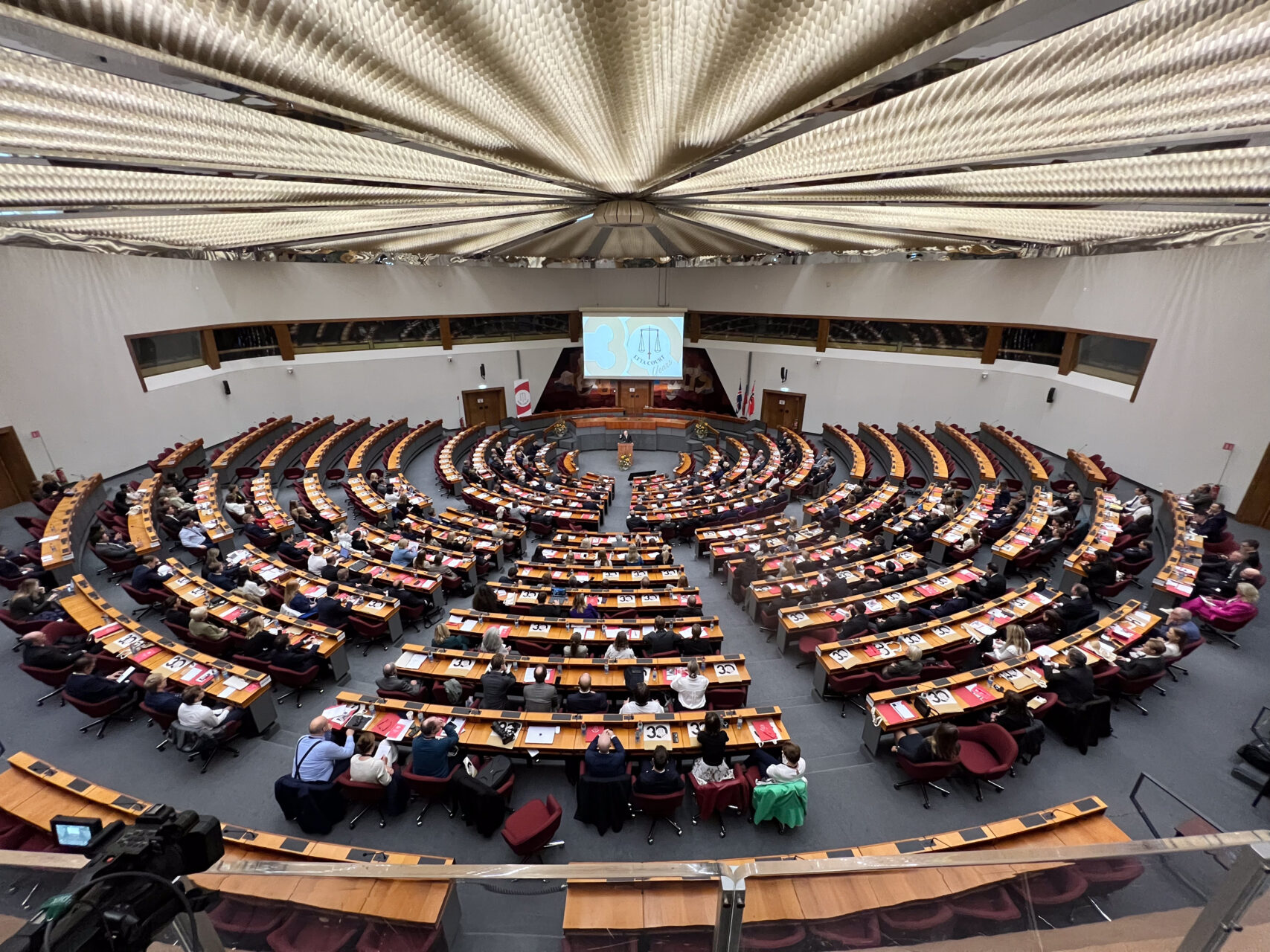In a powerful and precedent-setting advisory opinion, the European Free Trade Association (EFTA) Court has declared that European Union law—applicable pursuant to the European Economic Area (EEA) Agreement—prohibits the approval of fossil fuel projects without first assessing the global climate impacts of their emissions, including those generated when oil and gas is eventually burned—so-called Scope 3 emissions. The opinion in Föreningen Greenpeace Norden and Natur og Ungdom v. State of Norway (EFTA Court Advisory Opinion) could have sweeping consequences for fossil fuel development across Europe, especially in Norway, a major oil producer outside the European Union but deeply integrated into its legal framework through the EEA. This blog post explains the advisory opinion and its broader significance for climate litigation in Europe and beyond.
What Is the EFTA Court?
The EEA includes EU countries, as well as Iceland, Liechtenstein, and Norway, enabling the latter three countries to participate in the EU’s single market. The EEA Agreement aims to extend the core of the EU internal market to EEA/EFTA States (art. 1), thus achieving economic integration among EU and EFTA States. As such, although EU and EEA law are distinct, their substance is identical with respect to the core rules of the internal market.
The EFTA Court is the supranational judicial body of the EEA for countries that are not members of the EU but participate in the EU internal market. It serves Norway, Iceland, and Liechtenstein, ensuring these EFTA states comply with EU/EEA law, including some EU directives and regulations that are relevant in the context of the EEA, such as the EU Environmental Impact Assessment (EIA) Directive (2011/92/EU). Although separate from the EU Court of Justice (CJEU), the EFTA Court is said to be “EU-esque”: it applies common rules and principles of EU law; it resorts to the same interpretative toolkit deriving from EU law; and it must “pay due account” to the relevant case-law of the CJEU (art. 3(2) ESA and EFTA Court Agreement). In this sense, the EFTA Court also provides for an authoritative judicial clarification of EU law.
In terms of jurisdiction, the EFTA Court (1) hears cases brought by the EFTA Surveillance Authority (ESA, which is an institution similar to the European Commission) or EEA/EFTA States against other EEA/EFTA States, or (2) brought by EEA/EFTA States or other natural or legal person against ESA, and (3) issues advisory opinions when national courts request an interpretation of EEA law (which, as noted above, includes the relevant EU law).
While the latter are described as “advisory opinions”, the EFTA Court’s decisions on matters referred by national courts are binding upon the requesting court and all other EEA national courts that face the same question. As such, the ruling in Föreningen Greenpeace Norden is directly binding upon the Oslo District Court, but its findings are legally relevant to all other EEA national courts, which cannot deviate from the interpretation of the EFTA Court in this case. Additionally, although the CJEU is not legally obliged to take due account of the EFTA Court’s case-law, the intricate link between EU and EEA law suggests that it will consider the EFTA Court’s findings in Föreningen Greenpeace Norden when interpreting the same rule.
Background: The Norwegian Lawsuit and the Referral to the EFTA Court
In June 2023, two environmental organizations, Föreningen Greenpeace Norden and Natur og Ungdom (Nature and Youth), filed a legal challenge in the Oslo District Court against the Norwegian government’s approval of three major oil and gas projects in the North Sea: Breidablikk, Tyrving, and Yggdrasil (Greenpeace Nordic and Nature & Youth v. Energy Ministry (The Nort Sea Fields Case)). The plaintiffs argued that the approvals were unlawful under Norwegian and EEA law because the EIAs for the projects failed to account for Scope 3 emissions—the GHGs released when the extracted oil and gas is eventually burned, which represent the vast majority of emissions linked to fossil fuel use. The Oslo District Court found that a legal requirement that Scope 3 emissions must be subject to an impact assessment. That decision was appealed.
Faced with this novel and consequential legal question, the Norwegian Appeals Court referred the matter to the EFTA Court for an advisory opinion on how to interpret the EU EIA Directive (2011/92/EU), which is binding on EEA member states. In particular, the Norwegian Appeals Court asked the EFTA Court:
- Whether GHG emissions from the combustion of petroleum and natural gas extracted under a project (and later sold to third parties) constitute “effects” under Article 3(1) of the EIA Directive (2011/92/EU).
- Whether national courts must nullify the consequences of unlawfully granted development consents that lack an adequate EIA, specifically regarding climate impacts.
- Whether a national court may retroactively waive the EIA obligation if it finds that the procedural failure did not influence the decision outcome.
The EFTA Court’s Ruling
On May 21, 2025, the EFTA Court issued its advisory opinion, siding with the plaintiffs on all key issues. The Court found that an EIA must be conducted before consent is given for development if it is likely to have significant effects on the environment. This assessment must be made at the earliest possible stage of technical planning and decision-making processes, in line with the precautionary and prevention principles. The EIA must include a full assessment of the direct and indirect effects of the project and make it possible to determine whether the project is likely to have a significant impact on the environment. Annex IV of the EIA Directive, referring to the impacts of the project on the climate, details that the analysis of impacts should cover the direct effects, and indirect, secondary, cumulative, transboundary, short-, medium-, and long-term, permanent and temporary, positive and negative effects of the project.
The Court clarified that any review of the legality of government decisions, acts, or omissions must involve members of the public, in compliance with the Aarhus Convention. The public should be notified early and given effective opportunities to participate. Decision-makers should account for the opinions and concerns of the public, increasing accountability and transparency, and contributing to public awareness of environmental issues. Simply put, the obligation to assess environmental impacts serves a core democratic function, ensuring transparency, public participation, and accountability in decisions that affect human health, biodiversity, and the climate.
(i) Effects of GHG emissions from the combustion of fossil fuels extracted and sold to third parties
With respect to the effects of GHG emissions from the combustion of fossil fuels extracted and sold to third parties, the Court looked at the objectives in the EEA Agreement relating to the environment (art. 73, polluter-pays principle and prevention principle) and prior case law recognizing the risk of irreversibility and severity of climate change (Norwegian Air Shuttle and E.ON Biofor Sverige). The Court found that GHG emissions from the combustion of fossil fuels must be assessed in EIAs before oil and gas extraction projects are approved, since these emissions are among the likely significant effects of such projects. GHG emissions from the combustion of oil and gas are considered “indirect effects” of extraction projects within the meaning of Article 3(1) of the EIA Directive. This includes emissions from end-consumption, even if the fuels are refined and burned abroad. The EIA must assess all likely significant climate impacts, including those downstream impacts, because they are objectively a foreseeable result of extraction.
The Court accepted the plaintiffs’ argument that extracting fossil fuels is a prerequisite for burning them as fuel, which leads to related GHG emissions and their impact on the climate. Consequently, the combustion of petroleum and natural gas, along with their subsequent sale to third parties, represents a likely effect of the project. Before consenting to a project, the competent authority “must have information concerning the emissions resulting from the combustion of the petroleum and natural gas extracted” to determine whether limits should be placed on the quantities extracted. Although the impacts of oil and gas use could be assessed during the EIAs of refineries, the obligation to carry out such an assessment at the extraction stage still remains, and nothing in the EIA Directive precludes certain impacts from being assessed in multiple projects.
The Court further found that entities extracting oil and gas do not have an unconditional right to have a development and operation (PDO) plan approved when a profitable discovery has been made. Authorities can place conditions on the plan or outright refuse approval.
(ii) Are courts required to eliminate unlawful consequences of a development consent granted without a prior EIA and (iii) can a court retroactively dispense with the obligation of an EIA if this failure has not influenced the outcome of the decision-making process
With respect to the second question, the EIA Directive does not specify the consequences of a breach of a prior EIA requirement. The Court clarified that national courts are obliged under Article 3 EEA Agreement and the principle of sincere cooperation to eliminate the unlawful consequences of a breach—e.g., by revoking, suspending, or annulling development consent granted without proper assessment. Indeed, competent national authorities should take all measures necessary to remedy the failure to carry out the obligation. Retroactive validation (or “regularization”) of such consents is only allowed in exceptional circumstances, and cannot be used to bypass the rules or if environmental impacts were inadequately addressed.
With respect to the third question, the Court noted that the EIA Directive requires no remedy when a procedural defect in an EIA could not have led to a different outcome. However, this argument is not valid in the present case since downstream GHG emissions have obvious effects on the decision-making process. As such, “a national court cannot retroactively dispense with the obligation to assess the direct and indirect effects on the environment of a project under Article 3(1) of the EIA Directive.” This marks the first supranational ruling to affirm such a duty and limits judicial discretion by stating that violations of EIA obligations cannot be justified based on the assumption that the outcome would have been the same even if the obligations had been complied with.
The Norwegian Supreme Court’s Ruling
The EFTA advisory opinion comes on the heels of a Norwegian Supreme Court ruling in the case on April 11, 2025. The request for an advisory opinion, albeit related to the case, ran separately from the case itself. As such, the Supreme Court found that Norway’s Ministry of Energy violated national and international law by approving the same three oil fields without a proper Scope 3 assessment. The Court emphasized that courts must not use political discretion or defer to legislative choices to shirk their responsibility in preventing environmental harm. This is particularly critical when there is a risk of irreparable damage, as claimed in this case.
Comparative Context
The EFTA Court’s opinion builds upon and surpasses emerging jurisprudence in domestic courts on the requirement to consider Scope 3 emissions in EIAs. On January 2024, the Oslo District Court clarified that Scope 3 emissions must be subject to an impact assessment pursuant to Section 4-2 of the Petroleum Act and Section 22a of the Petroleum Regulations, interpreted in light of Article 112 of the Norwegian Constitution (on the right to a healthy environment) (Greenpeace Nordic and Nature & Youth v. Energy Ministry (The Nort Sea Fields Case). Later that year, in R (Finch on behalf of the Weald Action Group & Others) v. Surrey County Council (& Others), the UK’s Supreme Court held that downstream emissions from the combustion of oil produced by new wells must be considered in an EIA (citing the Oslo District Court’s decision as persuasive authority in para. 173). A similar reasoning was followed by the Scottish Court of Sessions in Greenpeace UK and Uplift v. Secretary of State for Energy Security and Net Zero and the North Sea Transition Authority and by the Guyana High Court in Morris and Marcus v. Environmental Protection Agency.
Conclusion
This ruling sends a clear message: governments in these three EEA countries cannot lawfully approve new fossil fuel projects without fully evaluating their downstream GHG emissions. The implications are significant:
- All future oil and gas projects in EEA countries must be subject to Scope 3 emissions assessments before approval.
- Past approvals may be vulnerable to challenge if they failed to include these assessments.
- Courts in Norway—and by extension, Iceland and Liechtenstein—must act to halt or invalidate projects where the EIA obligations were breached.
- This case cements the role of public participation and transparency as essential safeguards in environmental decision-making.
The Norwegian case (Greenpeace Nordic and Nature & Youth v. Energy Ministry (The Nort Sea Fields Case)) is set to be heard in the Appeals Court in September 2025. The case will continue considering the decisions by the Norwegian Supreme Court and the EFTA Court.






